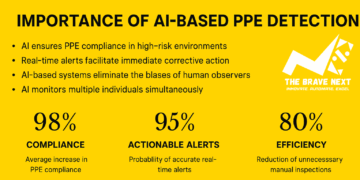Applying for a skills assessment VETASSESS is a crucial step for skilled professionals planning to migrate to Australia. However, not every application receives a positive outcome on the first attempt. When this happens, applicants have the option to request a VETASSESS reassessment.
One of the most common questions applicants ask is: “How long does VETASSESS reassessment take?”
The timeline is important because it affects not only your migration plans but also deadlines for visa applications. In this detailed guide, we will explore the processing time for reassessment, the factors that influence it, and strategies to avoid delays. Whether you are applying for the first time or considering reassessment, this blog will give you clear insights into what to expect from VETASSESS Australia.
What is VETASSESS Reassessment?
A reassessment is available to applicants who did not receive a positive outcome in their initial assessment. It allows candidates to:
- Submit missing or updated documents.
- Correct inconsistencies in their application.
- Provide stronger employment or qualification evidence.
- Reapply under a different ANZSCO occupation code, if applicable.
Since VETASSESS provides detailed feedback in the outcome letter, applicants can identify areas for improvement and prepare accordingly. But one key concern remains—the timeline.
Average Processing Time for VETASSESS Reassessment
On average, VETASSESS reassessment takes around 8–12 weeks from the date of application. However, the timeframe may vary depending on multiple factors such as:
- Volume of applications VETASSESS is handling.
- Complexity of your occupation.
- The quality and completeness of your documents.
- Whether additional verification is required.
Compared to a fresh application, reassessments can sometimes be faster because VETASSESS already has your initial records. But if major updates or new documents are involved, the timeline may extend.
Factors That Affect Reassessment Timelines
1. Completeness of Documents
If you submit all required documents correctly the first time, reassessment moves faster. Missing information or unclear evidence may lead to delays.
2. Occupation Type
Some occupations require more thorough checks due to complex ANZSCO role requirements. For example, professional roles may take longer than trade roles.
3. Verification Process
If VETASSESS needs to verify your employment reference letters, payslips, or qualifications with employers or universities, the timeline may extend.
4. Applicant Response Time
When VETASSESS requests additional documents, delays in responding will lengthen the processing time.
5. Time of Year
During peak application periods, such as before Australian migration program deadlines, reassessment applications may take longer.
How to Speed Up Your VETASSESS Reassessment
While applicants cannot fully control processing times, there are steps you can take to minimize delays:
- Carefully review your outcome letter and fix all gaps before resubmitting.
- Provide detailed employment evidence such as contracts, payslips, and tax returns.
- Ensure qualification documents (certificates, transcripts) are complete and certified.
- Use precise job descriptions that align with ANZSCO occupation codes.
- Seek professional help for drafting employment reference letters or preparing documents that meet skills assessment VETASSESS standards.
By improving the quality of your submission, you reduce the likelihood of additional document requests.
Difference Between Initial Assessment and Reassessment Timelines
- Initial Assessment: Usually 12–16 weeks, depending on the complexity of the application.
- Reassessment: Generally 8–12 weeks, since VETASSESS already has your records.
This means reassessment can be slightly faster, but it depends on the updates or corrections required.
What If My VETASSESS Reassessment is Delayed?
If your reassessment takes longer than expected, here’s what you can do:
- Track progress through the VETASSESS online portal.
- Check your email regularly for document requests.
- Contact VETASSESS support if the application exceeds the average timeframe.
- Avoid repeated follow-ups within short intervals, as it won’t speed up the process.
Remember, reassessment is a fresh evaluation, and VETASSESS ensures accuracy before issuing the final outcome.
Why Timelines Matter in VETASSESS Australia Applications
Understanding reassessment timelines is important because it directly affects your visa application strategy. Many skilled migration visas require applicants to submit a positive skills assessment VETASSESS within a certain validity period.
If reassessment takes longer than expected, you may risk missing deadlines for:
- Expression of Interest (EOI) submissions.
- State or territory nomination applications.
- Visa lodgment timelines.
That’s why applicants must plan reassessment early and account for potential delays.
Professional Support to Ensure Faster Reassessment
Specialized support services like WritingAhead help applicants by:
- Reviewing outcome letters and identifying weak areas.
- Drafting compliant employment reference letters.
- Checking qualification documents for completeness.
- Preparing applications that align with VETASSESS Australia requirements.
Professional guidance ensures your reassessment is strong, accurate, and less likely to face avoidable delays.
FAQs on VETASSESS Reassessment Timelines
1. How long does VETASSESS reassessment take?
On average, 8–12 weeks, depending on the complexity and completeness of your application.
2. Is reassessment faster than a fresh application?
Yes, usually. Since VETASSESS already has your initial records, reassessment can be processed in less time.
3. What can delay my reassessment outcome?
Missing documents, unclear employment references, or lengthy verification processes can extend the timeline.
4. Can I request faster processing for reassessment?
Currently, VETASSESS does not offer fast-track processing for reassessment, unlike initial applications.
5. Does occupation type affect reassessment time?
Yes, occupations with complex ANZSCO requirements may take longer for verification.
6. Will incomplete employment references slow down reassessment?
Yes, poorly written or vague references often require clarification, causing delays.
7. What happens if my reassessment takes longer than 12 weeks?
You can contact VETASSESS support for updates if your application exceeds normal processing times.
8. Does VETASSESS reassessment include qualification checks again?
Yes, if there were issues with qualifications in the first assessment, they will be reviewed again.
9. Should I apply for reassessment immediately after a negative outcome?
Yes, applying early helps you avoid missing visa-related deadlines.
10. Can professional help reduce reassessment time?
While professionals cannot shorten processing, they ensure your documents are accurate, reducing back-and-forth with VETASSESS.


















